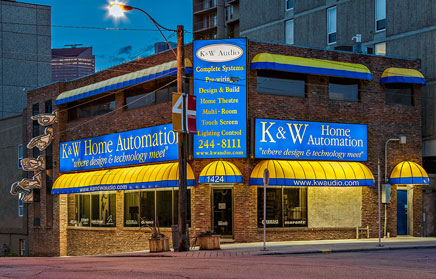TIP #14:
Today it seems as though VCRs have always been with us, but just a scant 15 years ago the VCR didn’t exist in the home. Now most homes have at least one, and most more than one. They have advanced by leaps and bounds, offering better quality sound and picture, while economy of scale has made the higher quality less and less expensive. The question of the day is, what should I look for in a VCR and what do the various features mean to me? The VCR has many moving parts with the result that the better the build quality the longer it will last. The best VCRs use die cast alloy chassis, not plastic, which can flex, putting the tape transport mechanism out of alignment. Not surprisingly the bulk of service problems encountered with VCRs relate to misalignment of this mechanism. If you want your next VCR purchase to last, be sure that it has a diecast metal alloy chassis. Basic VCRs have two heads, one each for recording and play back. To get high quality slow motion, a clear visual search and a noiseless visual pause, four heads are needed. Just being able to whiz through commercials justifies getting a four head machine, let alone having the ability to slow and freeze the picture to analyze your golf swing, see if Aunt Mae really is walking behind the “man on the street” interviewer, or when the actor’s head is replaced with an explosive charge! A good picture is great, but without sound, not very engaging. hi-fi refers to the ability of the VCR to record and playback with CD sound quality, a necessity if a surround processor is in your future or if your VCR will be hooked into your existing stereo system. While hi-fi is stereo, with all the surround information located on two separate tracks (one for right, one for left) the word “stereo” on a VCR indicates it’s ability to decode stereo TV programs. Stereo TV is now available on almost every channel and the sound is quite good, better, in fact, than FM.
A relatively new feature available on some VCRs is called VCR PLUS. This feature makes programming a very simple task. Rather than inputting channel, time on, time off, day and recording speed sequentially, VCR Plus offers full programming with the simple input of five or six numbers, shown in the TV listings. This feature reduces errors dramatically by simplifying the programming process. Digital tracking, now available from most manufacturers, allows you to set automatically, and if necessary reset the tracking at the optimum level. No more getting up to adjust the tracking when those annoying vertical lines and audio distortion appear when viewing rented movies, and tapes not recorded on your machine.
Learning remotes, or a remote control which allows one to run any manufacturers TV, or stereo components, are available on more fully featured machines ” with some offering a “multi brand” remote. A VCR learning remote can learn the remote signal of any brand remote control component, whereas a “multi brand” unit will only run the basic functions of most popular brand Television sets. Reducing the number of remotes lying around is always a good thing. Another useful feature is Jog/shuttle, a wheel within a ring on the remote or face plate. It’s works much like a mouse on a computer, allowing you to control many different functions (visual search, setting the clock and timer, channel scanning, and programming the unit), all by simply rotating the wheel and locking in the command with the ring. If more units had these we would have far fewer flashing 12:00s in the world today. This is a great feature, but unfortunately has been available only on expensive pro quality units up until very recently. Today more often than not a Jog/shuttle machine is available at the $700 price point and above. An exception is the Mitsubishi U56, which is the least expensive unit on the market to offer this feature and all the features mentioned above, (VCR PLUS and earning Remote at a fifty dollar premium). The reason that the old clunker you’ve been using for the last eight years still works, is because it cost a fair dollar back when you bought it. Cheap VCR’s are cheap for a reason, poor build quality and inexpensive parts contribute to a short lifespan and an unhappy camper. When going out to make your next VCR purchase, remember that you will never regret buying quality – so get the good one!


